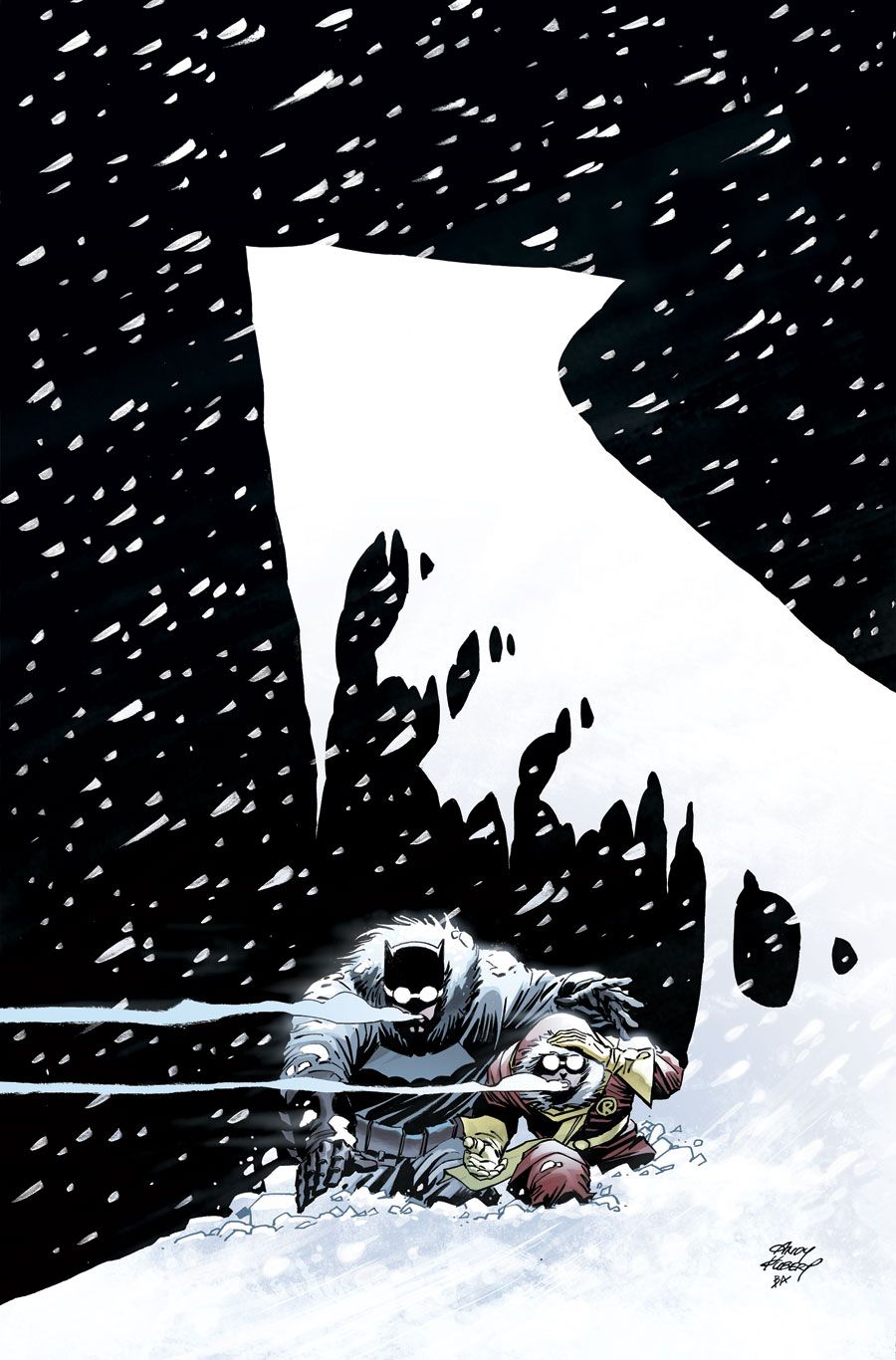Stories are meant to challenge and often unsettle readers, while staying with them long after it's finished. In "Dark Knight III: The Master Race" #3, Frank Miller, Brian Azzarello, Andy Kubert, Klaus Janson and John Romita Jr. aim to do all three. This story starts to touch on themes that were present in Miller's 2011 graphic novel "Holy Terror," and -- while it feels a little less in-your-face than the previous book -- there's no denying Miller and company aren't taking the easy way out.
It will come as no surprise to readers when Miller and Azzarello revisit the Kandor City Kryptonians' religious extremism. What might startle people is how quickly they escalate both the hostilities and the rhetoric on display. Having revealed that the extremists in Kandor City have murdered all the other inhabitants, Miller and Azzarello avoid any sort of balanced portrayal of the Kryptonians. They're all reprehensible beings who follow their cult leader blindly and die as part of his cause. The end result is a book that has no shades of gray; it's all black and white, a conflict between those who are bad and those who are good. It's a stark setup that goes for a gut punch and staggers the reader even as it makes them yearn for something a little more nuanced. After all, as effective as a sledgehammer approach is, it's not capable of anything more than the broadest of strokes.
LOOK: New "Dark Knight III" #3 Variant Covers Put Batman Back in Action
Miller and Azzarello also bring a strong sense of disillusionment to the political spectrum of today's world. The talking heads reacting to the atrocities committed in this issue don't just bear a resemblance to current figures; they point-blank are the current political figures, even if they aren't identified by name. Those feeling battered by the United States' current election season will find themselves cringing as Miller and Azzarello echo the rhetoric spoken by candidates and the media as a whole.
"Dark Knight III: The Master Race" #3 pulls together well when it comes to Bruce and Carrie's relationship. We finally get to see inside Bruce's head this issue, as he narrates some of the early pages. There's a moment early on where Bruce gently brushes Carrie's sleeping face and whispers, "You did good, kid." It's a beautiful study in contrasts. Because of the tight focus on Bruce's hand and Carrie's face, they come across as mammoth, the hand in particular. Even as we see the numerous scars and the large, thick, slightly misshapen fingers (in the way that a boxer's hands are), Kubert and Janson present this as a gentle moment. The position of the hand and how the tips of just two of the fingers graze Carrie's face result in a moment that shows us both the power that is in that hand, and also the way Bruce continually maintains control and grace. This is a story that gives us a relationship in which Bruce worries on his protege even as he trusts her; we get a Bruce who may still close off part of his soul to everyone, but Carrie is able to dig much deeper than most ever did.
Kubert and Janson's art does a lot of the heavy lifting in this book. Moments like a cold-weather expedition work because of the way the duo draws the scene. The massive parkas and lined hoods, the trails of breath coming out of their mouths, the way the snow crumbles around the trail the two are pushing through -- all bring the scene together in a way that is undeniably a visual punch on the page. It all culminates on a visual level around the halfway point of the issue, where Bruce starts swinging a hammer. We can see the effort used to create the impact through the look on his face and the way he holds the hammer, which serve as a contrast to what's happening while readers cheer this grumpy curmudgeon of a hero towards victory.
The art on the mini-comic, with breakdowns by Romita Jr. and finishes by Miller, comes across a little rougher, which is perhaps just as well since the story in this spotlight on Green Lantern is also much less refined. It's a bit frustrating; after the story starts in an interesting direction, with Green Lantern musing the loss of his own identity within his superhero role, it quickly flames out into a bit of a mess involving seductive Kryptonian women that talk of godhood and hero worship, which takes the book in a predictable but distasteful direction. The visuals have some hallmarks of Romita, with his thin and slightly elongated character designs. Miller's finishes over the breakdowns strip out a lot of the detail you normally get from Romita's pencils, and the end result feels blocky and not quite fully formed. This actually works in the early part of the story, but feels unimpressive further in.
There are definitely some aspects of "Dark Knight III: The Master Race" #3 to like. The relationship between Bruce and Carrie is great, and Kubert and Janson's art looks fantastic. As a whole, the book is designed to shock its readers and that's exactly what it does. That said, there needs to be some more nuance to keep this from turning into either parody or a shrill polemic. The imagery of the Kryptonians is too strongly based on Middle East extremists to ignore, and it would be easy for this comic to go down the same disastrous road as "Holy Terror." Hopefully, future issues will give us a slightly more pragmatic and thoughtful take on the subject. For the moment, it's still interesting and worth reading, but it's also hard to avoid these warning signs.

